There is a process when working on a residential project when you actually start figuring out what the project will look like in terms of elevations, exterior materials, interior finishes, specialty lighting, cabinetry, plumbing fixtures … a lot of stuff. This phase of the work is widely referred to as “Design Development” … and that will be the focus of our conversation today. Welcome to Episode 107: Design Development.
[Note: If you are reading this via email, click here to access the on-site audio player]
Podcast: Embed
Subscribe: Apple Podcasts | Spotify | Android | iHeartRadio | TuneIn
This is the second installment of a quarterly series of residentially focused episodes. The first installment was Ep 95: Schematic Design
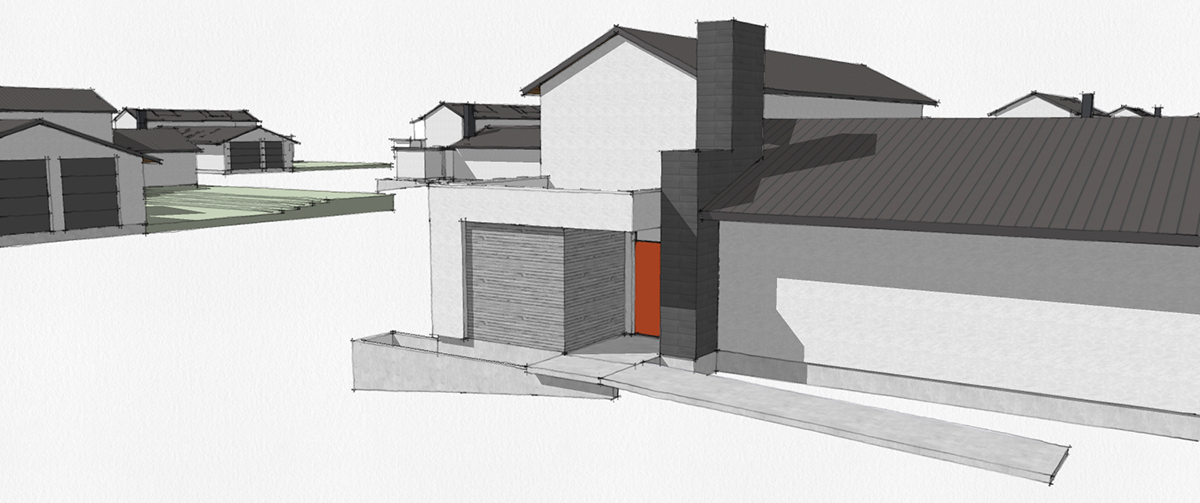
What is Design Development? jump to 2:44
Design Development is the second major phase of a residential following Schematic Design – assuming that you don’t identify programming as its own phase (which I don’t – but this is one of the glaring differences between residential projects and commercial projects). To define Design Development, we can look at the proposals I send out that are generated in-house and the AIA B101 contract between the Owner and the Architect.
AIA B101 definition:
§ 3.3.1 Based on the Owner’s approval of the Schematic Design Documents, and on the Owner’s authorization of any adjustments in the Project requirements and the budget for the Cost of the Work, the Architect shall prepare Design Development Documents for the Owner’s approval. The Design Development Documents shall illustrate and describe the development of the approved Schematic Design Documents and shall consist of drawings and other documents including plans, sections, elevations, typical construction details, and diagrammatic layouts of building systems to fix and describe the size and character of the Project as to architectural, structural, mechanical and electrical systems, and other appropriate elements. The Design Development Documents shall also include outline specifications that identify major materials and systems and establish, in general, their quality levels.
I would typically refer people to the small project family of contracts that the AIA has assembled which is more suited to projects that are modest in size and brief in duration. (B105-2017) mostly because on residential projects, a great deal of what is listed in 3.3.1 on the B101 version listed scope of services that are not typically either provided or when they are provided, they are directional rather than comprehensive in their scope. It isn’t typical that consultants are retained to provide engineering services such as mechanical and electrical systems during the project in any capacity as these are typically resolved as part of a design-build scope of work that is coordinated between the architect and the contractor on the project.
Andrew’s definition is very succinct: The phase in which most design decisions are finalized.
I lifted my definition directly from the contract language we use and it is specifically set up so that we can identify and communicate what problems we are solving, how we will present our intents, where and how we will meet, and the decisions that will be required. It is:
Based on the approved Schematic Design package, BOKA Powell will create Design Development drawings and other documents to fix and describe the size and character of the home’s building exterior and interior finish-out. Deliverables will include ¼” scale hard line floor plans, ¼” scale exterior and interior elevations. We will meet with the clients through regularly scheduled meetings, to present and review the Design Development concepts. Meetings required during the Design Development phase will occur virtually, or with prior arrangements, at predetermined locations, including the current home of the client, the project site, or BOKA Powell’s Dallas office. We will make revisions to plans in an iterative process as feedback is gathered. We will seek approval from the client prior to proceeding.
I feel the need to point out that the language above is specific to our residential projects and not our larger-scale projects.
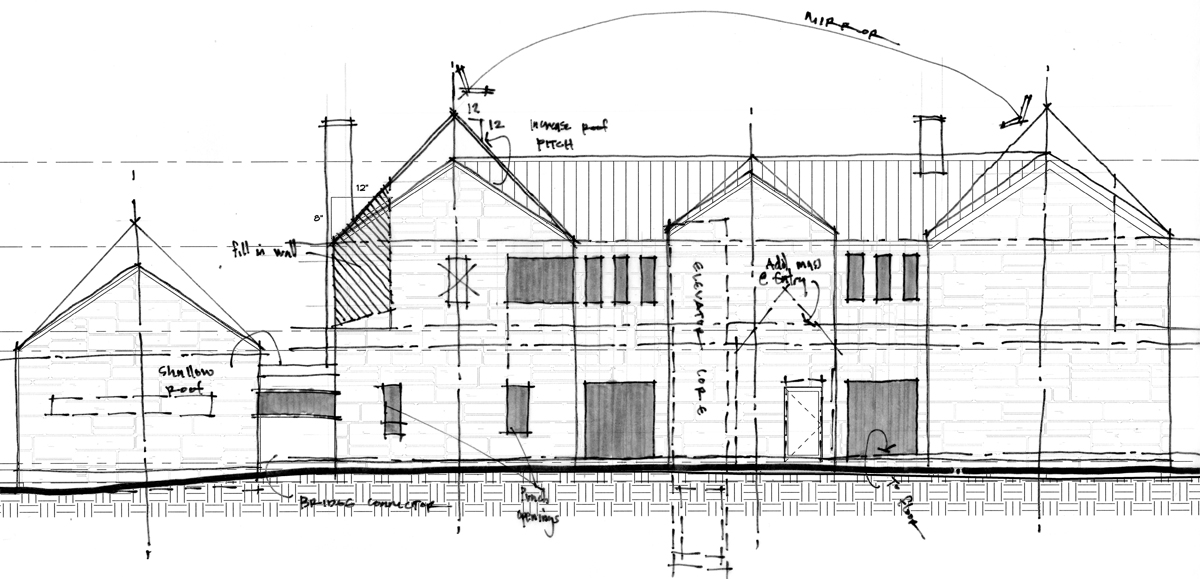
What Happens During Design Development? jump to 23:40
For me, and this represents how I was taught, Design Development is when the project goes vertical and starts to exist in 3 dimensions. In Schematic design, we are working through programming, room size, adjacency, etc., but we start developing elevations and interiors during design development. This is typically the phase that excites clients the most. We will start putting together exterior and interior elevations, discussing materials and finishes, plumbing fixtures, specialty lighting – everything that helps explain the aesthetic of the project.
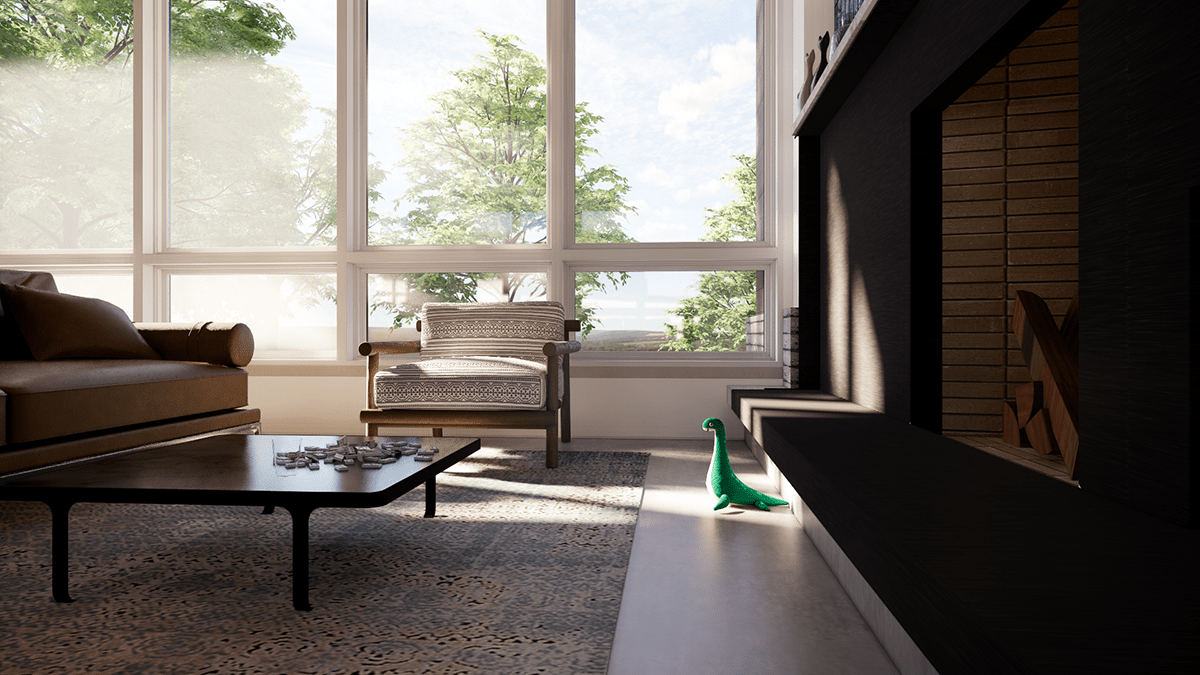
This is also the phase where we actively start the process of getting the project into Revit. This part has been a bit of an experiment since I started a residential studio at BOKA Powell. In the past, almost all this information – particularly interior elevations – we presented and discussed using 2D CAD-generated drawings. Now we are working in programs like SketchUp and Enscape to work in real-time and in a fully rendered environment. I will tell you that it definitely takes more time to do this.
The interior rendered image I am showing above is not necessarily typical for the design development (this is particularly true for residential projects). Since I have a small group of extremely talented people in my office that are also in place because they bring their skills to the large-scale projects we have, I have access to skillsets that are not typically available in small architecture shops. It wasn’t until I was at a larger firm that I really started using interior renderings as part of the design development process – at least, not to the scale to which I do now. I have a dedicated article that is specific to renderings for residential projects that goes into far greater detail – you can read more in the article “Renderings for Residential Projects“.
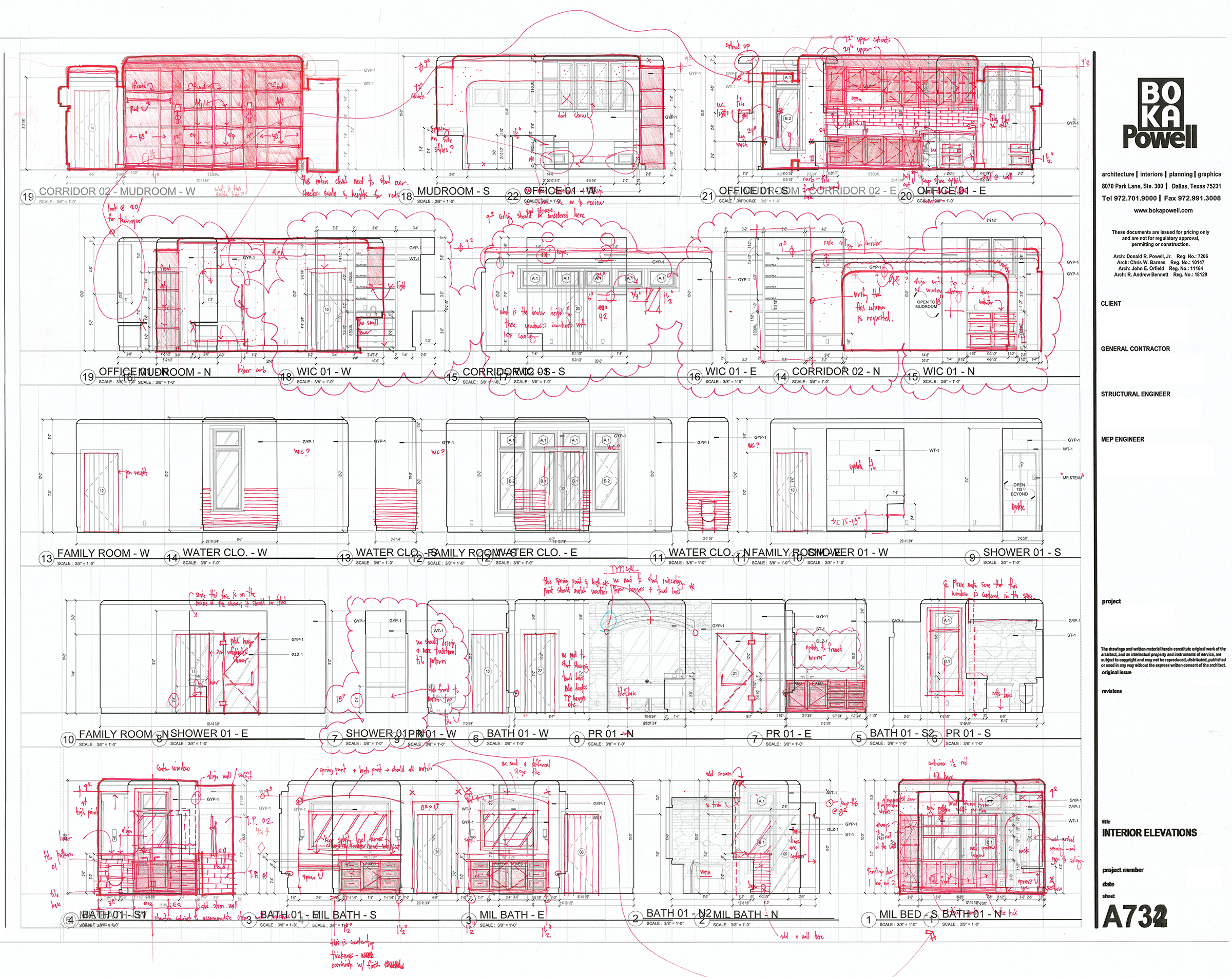
We also cover extreme nuances about how people will live in the house and the sort of questions that might come up and eventually need to be addressed. The image I am showing above, despite the markups being in red, is actually a part of the design development process. We start the process of entering everything into our drafting software during Design Development and I have the young architects I work with take a stab at laying out interior elevations. Once they are done, those drawings come to me and we will sit down and I will start going over the thousands of considerations that need to be made. “Where does the Turkey Gravy boat that they use at Thanksgiving go in this cabinet layout?” and “Once they get out of the shower, where are they pulling the towel from that they’ll use to dry off?” and so on for any possible thousands of considerations.
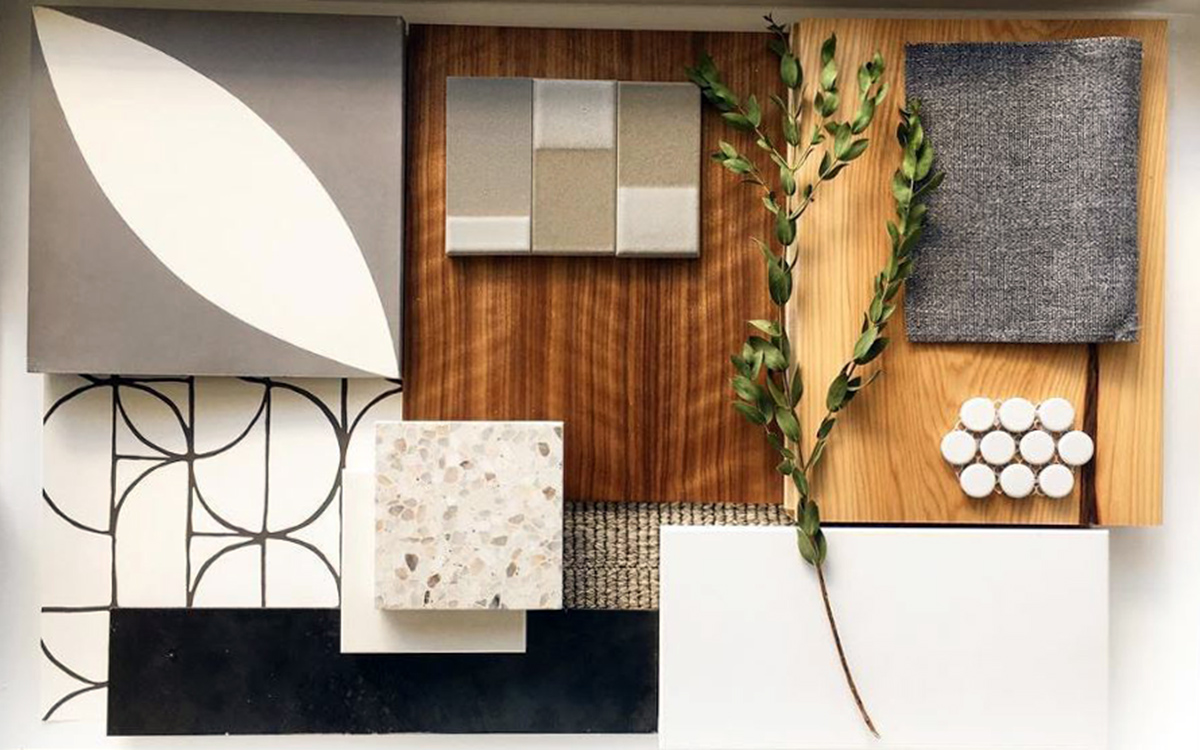
We also talk for a bit about how the material palette is developed during design development. This includes both interior and exterior finishes, as well as selections that are installed by the contractor – which includes plumbing fixtures (sinks, faucets, tubs) and lighting – both performance-based (downlights, accents lighting, wall-washers) as well as decorative fixtures (sconces, pendants). People seemed to be fairly surprised when they learn that these are services we provide thinking instead that an interior designer will be required. Even though I have been making these selections for the last two decades, I do have a talented Interior Design department within my office and most would love to get involved and help make all these selections.

Who is typically involved – Consultants jump to 40:36
There is an entire myriad of consultants that come on board, most of which should already be in place before schematic design ends. Based on our goal of reducing soft costs to the client, we typically limit the number of consultants based on very specific needs and even then, we typically bring them on towards the middle to end of Design development so that we can reduce the number of possible changes that could happen during this design-centric process.
Geotechnical – this should already be done during the schematic design process but I can imagine a scenario where the Geotechnical engineer has not been engaged yet. For those who may not know this, the architect should NEVER contract directly with the civil engineer or the geotechnical engineer – those needs to be direct with the owner.
Structural – I don’t normally give my structural engineer any scope of work until the design development has been in place for a bit. Waiting this long to engage the structural engineer is preposterous in commercial work but is fairly common in residential. I try to limit the number of design unknowns that remain before I have the engineer begin work. It is during Design development that the actual design is settling into place and I don’t want to burden my consultants with minor endless changes from meeting to meeting.
Mechanical – typically design-build in residential projects but that doesn’t mean we aren’t thinking about it. I’m not going to go to the trouble of figuring out by brick coursing so it aligns with window sizes only to ignore duct runs and end up with soffits all over the place.
Audio Visual – depending on the size and complexity of the home, sometimes an AV consultant will be brought in to make sure that any special considerations that need to be made based upon owner requirements are addressed.
Landscape Architect – If I can get a Landscape Architect on the project, I will use them 100% of the time. Sadly, whenever budget becomes a consideration, this is the scope of work that is frequently targeted as a source of reduction since it doesn’t necessarily demand to be completed at the time of move-in and is seen as a likely candidate for phasing.
Usually, the people that we get involved with beyond those listed above are project specific and we bring them on when necessary. This doesn’t even have to be a specific contractually obligated consultant but rather a vendor that we leverage to help us solve a particular problem.

Documentation jump to 52:40
So what sort of drawings are created during Design Development? I already defined that during the proposal and B101 contract portion covered at the beginning but I thought it would make sense to discuss the outputs (otherwise known as drawings) of this process and what would you possibly do with them at this phase.
Answering what we do with them will help clarify what sort of drawings we are preparing so let’s begin there. Pricing is first and foremost the main reason we produce a high level of documentation during the Design Development phase of the work. More often than not these days, contractors are being brought on early as part of the team to help manage the costs of the decisions being made so that the project budget remains feasible.
The secondary is that we want to get approval and signoff from the clients that what we have shown to this moment in time is approved before we get into construction documents. Since we don’t meet with the client too often during the construction documentation phase of the work, this is the time when we are attempting to answer as many possible questions and address as many needs as we are capable of articulating. This period typically coincides with the greatest number of client meetings as well – which correlates to this period taking the longest to work through. We typically break off portions of the project to focus on when presenting and then leave time in the schedule to allow for the owners to think and ponder on the information they have been presented with.

What the Rank jump to 56:24
Clearly, this section is trending to be all about food because people definitely have opinions that are specific to food. To that end, I am going to pick a topic that is sure to separate reasonable people from psychopaths. Today, we are ranking [drumroll please] ………………..
What are your Top 3 Hot Dog Toppings?
| #3 | #2 | #1 | |
| Andrew’s Top 3 Hot Dog Toppings | Shredded Cheese | Chili | Mustard |
| Bob’s Top 3 Hot Dog Toppings | Red Onion | Sweet Pickle Relish | Mustard |
We spend a little time upfront to discuss hot dog to bun ratio – something that can completely impact my hot dog eating experience. In my opinion, I am looking for a 50/50 split of meat to bun because you can definitely have too much hot dog flavor in a single bite. Andrew’s response to this proclamation was “What!?!” but I stand behind my opinion that there is such a thing as too much hot dog flavor.
I am also going to point out that when I say hot dog, we all know what I am talking about. This does not mean brats or hot links – classic American hot dog typically associated in the US with baseball games and the 4th of July.
Lastly, you will see that there is no mention of ketchup on this list – something that Andrew and I share bold feelings about. If you like ketchup as a condiment on your hot dog, you might want to skip this particular ranking portion of the show.
Ep 107: Design Development
The process of Design Development that was discussed in today’s episode probably aligns with the vast majority of residential architects out there practicing today – but as with all things, there will be nuanced differences between what I have described and the process for others. Of all the phases of work typically retained from residential architects, clients unilaterally enjoy the design development phase the most because this is the portion of the process that resembles most of what they were expecting when they decided to hire an architect in the first place. The process of seeing their project move through programming and plan development and turning into a 3-dimensional building is extremely rewarding for most people (architects included).
Cheers,
Special thanks to our sponsor Clopay Corporation, the largest manufacturer and marketer of garage doors and rolling steel doors in North America. Visit ArchitectDoorHelp.com to take advantage of the Clopay Corporation Architect Portal, a simple, all-in-one resource to streamline the specification of all Clopay, Cornell, and Cookson sectional or rolling garage doors for residential or commercial applications.

